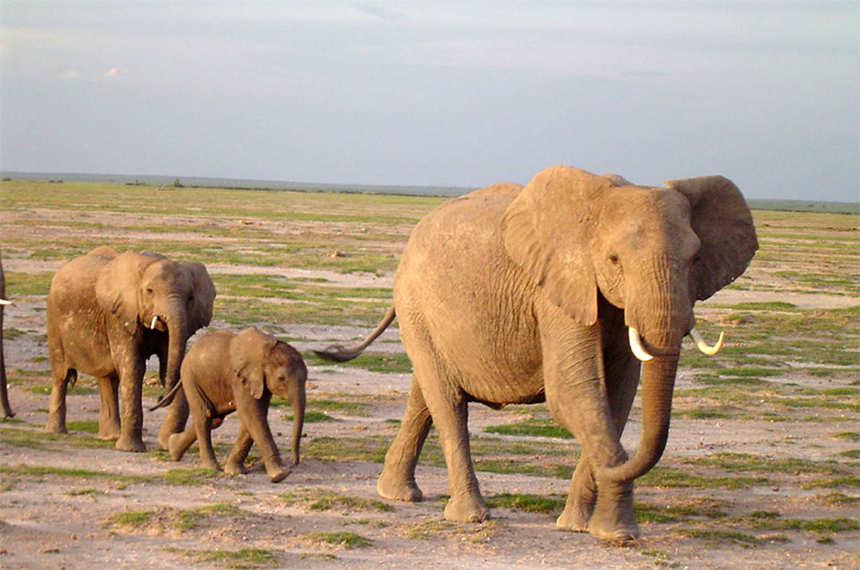Elephant songs
Scientists figure out how elephants make their low, low rumble

Elephants sometimes communicate with sounds below the range of human ears. Researchers recently found that air rushing through the larynx can create the superlow sounds.
ANGELA S. STOEGER
Elephants are well known for their trumpetlike sounds, but they can “sing” superlow songs, too. You’ll never hear these tunes in full, though. That’s because elephant songs include notes too low for the human ear to hear.
Some scientists had suggested that elephants make these low sounds in the same way that cats purr — by squeezing muscles near the voice box, or larynx.
But elephants don’t need to use throat muscles to go low, say scientists in a new study published in the journal Science.
Such ultralow sound frequencies are known as “infrasonic” notes, or “infrasound.” The sounds can travel as far as 10 kilometers (6.6 miles) in the air. (For comparison, the song notes audible to humans travel only about 800 meters through air.) The superlow songs may also vibrate the ground, sending infrasonic signals even farther. The researchers mimicked the lowest part of the song by blowing air through the larynx of an elephant that had died. The experiment showed that just rushing air passing through the larynx makes the fundamental sound of the song.
With this finding, “there’s no need to go into the purring hypothesis,” Christian Herbst told Science News. Herbst, a voice scientist at the University of Vienna in Austria, worked on the new study of elephant song. (A hypothesis is a possible explanation that gets tested during a scientific experiment.)
An elephant’s larynx works like those in people. It’s like a tunnel with strips of tissue, called vocal folds, across it. Air traveling from the lungs through the larynx separates the folds. Then they come back together and create puffs of air.
“Think of a flag in the wind,” Herbst told Science News.
That process leads to the formation of sounds. Larger folds mean lower sounds, and an elephant’s vocal folds are eight times as large as a human’s. If people had larger vocal folds, we could speak in lower tones — and possibly even communicate in infrasonic voices.
The quest to explain elephant sounds doesn’t lead to easy experiments. When it comes to an elephant’s sound production, “We really do not know that much,” Peter Wrege from Cornell University in Ithaca, N.Y., told Science News. Wrege, who studies animal behavior but did not work on the new study, runs a project that uses infrasound to keep track of elephants in the forests of Central Africa.
Herbst knows first-hand how hard it is to probe sound production. For his own experiments, he’s put equipment into his mouth to study his own voice. But that wouldn’t work with big animals, he said.
“The elephant would just close his mouth and say, ‘Thank you for the snack.’”
Power Words
larynx The hollow, muscular organ forming an air passage to the lungs and holding the vocal cords in humans and other mammals. It’s also known as the voice box.
infrasound Sound waves with frequencies below the lower limit of human hearing.
vocal folds Folds of thin tissue that project inward from the sides of the larynx to form a slit across a region in the throat, and whose edges vibrate in the airstream to produce the voice.
hypothesis A proposed explanation made on the basis of limited evidence as a starting point for further investigation.







